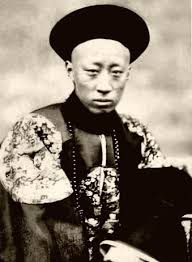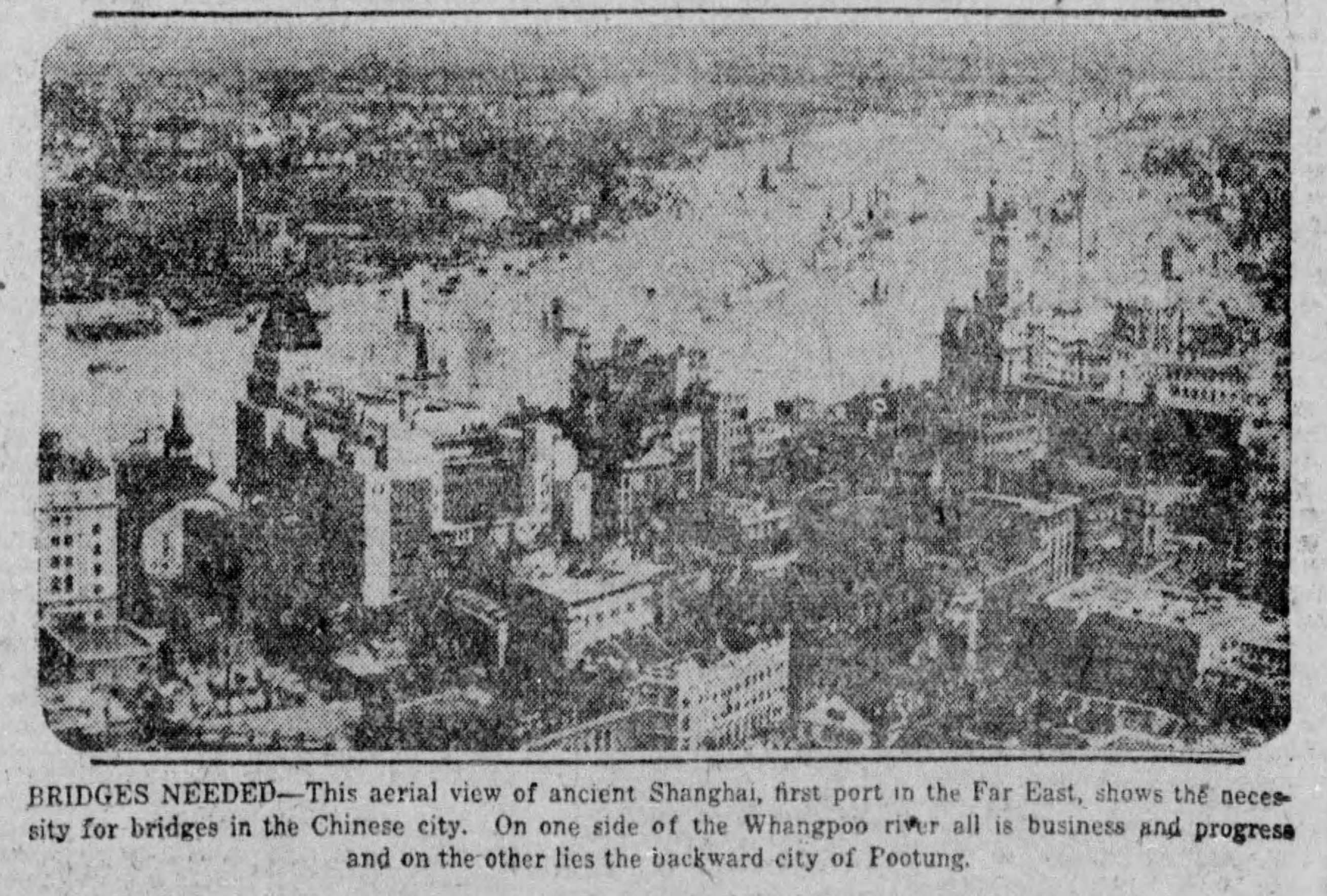Posted: May 11th, 2016 | No Comments »
1930 and an apparently excellent “cocktail artist” (nowadayas they like to be known as “mixologists”; most of us know them less prosaically as “barmen”) wants a job in Shanghai. Not a bad choice – cocktails were becoming quite the thing, though he might have found himself spending his most of his time mixing simple stengahs and chota pegs. I wonder if ever got a job and, if so, where?

Posted: May 10th, 2016 | No Comments »
Prince Gong’s Worldview, an RASBJ event Sunday May 22 2016

WHAT: Dr Ines von Racknitz talks on Prince Gong’s worldview while we tour his palace
WHEN: Sunday May 22, 2016, 2:30-4:30 PM
WHERE: Prince Gong’s Mansion, Gongwangfu æ王府 西城区å‰æµ·è¥¿è¡—17å·tel: 83288149 (details below)
COST: Members RMB 50, non-Members RMB 100 (includes entrance fee). Group size will be limited; RASBJ members have priority until May 15th.
RSVP: email events@rasbj.org before May 20 and write “Prince Gong”
ABOUT THE EVENT:
In 1860 Britain and France invaded China. The Xianfeng Emperor fled Beijing, leaving his half-brother Prince Gong, 26, to deal with the “barbariansâ€. Against the wishes of a xenophobic Manchu elite, Prince Gong negotiated a treaty with the Westerners that initiated diplomatic relations with the West – and changed China’s relations with the outside world forever.
What did Prince Gong know about the outside world, and who taught him? How did he, exceptionally, come to support China’s modernization and “opening-up� Why did he die in disgrace? How do China’s current views of itself and the world relate to his negotiations 150 years ago?
Dr Ines von Racknitz will explore these questions as we walk through Prince Gong’s palace. Our guide and cultural interpreter currently teaches Chinese history at Nanjing University, focusing on late Qing, as well as global history. She is author of “The Looting of the Yuanmingyuan: ‘Imperial’ Prize-taking, Loot and Booty during the British-French China Expedition of 1860,†and is preparing a book on Chinese cartography.
MEETING TIME AND PLACE: Meet 2:30 PM Sunday May 22 at the ticket office of Prince Gong’s Mansion, 10 mins walk north of Beihai subway stop. Tell taxis “GongWang Fu†æ王府 西城区å‰æµ·è¥¿è¡—17å· or phone 8328 8149

Posted: May 9th, 2016 | No Comments »
A couple of days ago the super-tame Shanghai Daily ran an article entitled ‘Campaign Targets Illegal Building in Heritage Areas’ – the latest in a long line of dubious pieces suggesting the city’s Xuhui District was working hard to preserve the former French Concession. The evidence however is to the contrary.
Frenchtown has taken a serious pounding recently and 2016 looks like being a bad, bad year for architecture in the area. The wholesale destruction of Dongtai Road (Rue Hennequin) and surrounding streets, the ongoing destruction of the Jinling Road (Rue du Consulat) area, the travesty of ‘preservation’ in the Jian Ye Li shikumen cluster, as well as a few other demolitions, indicate that Frenchtown is still getting a battering on a regular basis. Some pictures sent from Shanghai by Andrea Lingenfelter indicate more to come…
New demolition notices have appeared along Yanqing Road’s (Route de Grouchy) west side, specifically around No.12, as far as Donghu Road (Route Doumer) and Huating Road. Within this triangle are many excellent pre-1949 structures that are integral to Frenchtown’s overall architectural heritage. Tenants have already been evicted and some buildings bricked up. How far and how complete the demolition will be remains to be seen. Clearly, in Frenchtown, as in the former Settlement Central District, the former Western and Northern External Roads, Hongkew, Tilanqiao and Yangtszepoo the notion of “heritage areas” is now more clearly than ever an Orwellian “doublethink” construction as the city’s past is obliterated.



Posted: May 8th, 2016 | No Comments »
I’ve blogged previously several times about western magicians adopting Chinese garb and names to capitalise on the old music hall audience’s belief that Chinese were great magicians – here, here and here. There were some genuine Chinese magicians working the stages of Europe and America, but also the likes of Chung Ling Soo. So prevalent were these fake Chinese magicians that jokes could be made of the often odd names they chose. Here’s one such joke on the theme from the Brooklyn Daily Eagle in 1932 (though originally from the English newspaper, Sheffield’s Weekly Telegraph) combining two famous Shanghai districts Woosung (Wusong) and Pootung (Pudong)…

Posted: May 7th, 2016 | No Comments »
Poor old unloved Pootung (now having to be called Pudong for a start to its troubles) – seems nobody has ever much liked it (I blog on the Bund and a hundred people or more retweet it; on Gaoqiao and one person does!). Most of the time it appears on the old maps as a wasteland, and empty apart from the river front go-downs and docks. Old China Hands that are about as genuine as a faux European town in the Pudong boonies like to brag they knew Pudong when it was just dirt tracks and chicken farms – they didn’t; they lie.
It’s true Pudong was always a tough beat – there were markets, but of the flea/junk or young orphan girls for sale type; there were bars, but they sold sam shu and Hanshin rot gut rather than Stengahs and Chota Pegs; there were cemeteries, but only the nameless, indigent and poor got buried there. Sailors did a bit of roistering, but took most of their money to Hongkew; Pudong working girls were the most clapped out and, should you be stuck there, you would, like today, be left with the ignominy of being surrounded by awfulness (dirt poor and dock/industrial then; some of the world’s worst architecture and most soulless streets now) and staring across hopelessly at the Bund. Personally I’ve only ever visited Pudong for three reasons 1) to get to the airport 2) because someone was offering either to pay or repay me and 3) because there was a free drink in it (actually these are also the only three reasons I would ever go to Luton but anyway…). Not that there aren’t certain charms in arriving – the Jinling Road ferry was often a pleasure on an early spring morning, but in general – yuk.
Of course the main problem, and the primary reason why one side of the Whangpoo got art-deco and neo-Gothic splendour and the other side got warehouses, was lack of bridges. Although technically outwith the Settlement, like the Western Roads (and who doesn’t love “outside the Settlement” Xinhua Road etc etc), it could have been developed but for lack of bridges to connect it. Daily commutes on sampans are charming for a week and then just a a bit of a drag! But thus was it ever – here, in 1930, the problem is noted in the newspapers….

Posted: May 6th, 2016 | No Comments »
Saturday, 7th May 2016
4:00 pm – 6:00 pm
Tavern at the Radisson Xingguo Hotel
Deciphering Indus Script: A Mammoth in the Midday Sun

Speaker: Lynn Fawcett
In 1882, Terrien de Lacouperie published an article in the Journal of the Royal Asiatic Society of Britain and Ireland. In the article entitled: ‘A Lolo Manuscript Written on Satin’, Lacouperie said that he thought that there was a link between the legend on a seal that Alexander Cunningham had found at a place called Harappa in Lahore, and Lolo writing.
Harappa is now known to have been just one city of many in a Bronze Age civilisation dated to 3300–1300 BCE: the Indus Civilisation. The original corpus of one seal has now grown to several thousand objects bearing signs known as the Indus script.
It therefore seems fitting, that after a gap of 134 years, Lynn Fawcett is going to present a lecture to the Royal Asiatic Society China in Shanghai, in which she demonstrates that what Lacouperie intuitively knew from his graphical analysis of archaic scripts is correct. There is a link between the Indus script and archaic Sinitic scripts including Lolo.
Lynn Fawcett is an independent researcher. She argues that the roots of Chinese script go back at least 35,000 or 40,000 years. Lynn is building a website to publish the results of her research on what she has called the Cave Script Translation Project: www.cavescript.org.
Deciphering the Indus script is the latest branch of Lynn’s work.
Lynn says: “Like Lacouperie, I started out with pattern recognition. In my opinion there is an obvious link between symbols found in prehistoric caves in Europe and the glyphs that are the building blocks of archaic Chinese.
“My project is now over four years old. It has grown from the translation of a 17,000-year-old hunting tale to a family of scripts spanning time and space.
“I am delighted that the Indus script has become a new member of the family, because the script has been very well documented and researched, and the provenance of many examples of the script is excellent. I can’t read everything in the Indus script, but I have been able to decipher several inscriptions. Those inscriptions have given me a fascinating insight into life in the Indus Valley Civilisationâ€.
In this lecture, Lynn will talk about the decipherment process and share some of her translations. RAS members should note that Lynn’s work has not yet been independently verified.
Image: The first Indus seal that was found by Cunningham.
The inscription has been degraded. Therefore, it cannot be deciphered with certainty. It is possible however, to make an educated guess at what the inscription says and the purpose of the seal.
RSVP: bookings@royalasiaticsociety.org.cn
ENTRANCE: Members: 70 RMB Non-members: 100 RMB
Includes a glass of wine or soft drink
VENUE: Tavern; Radisson Plaza Xingguo Hotel, 78 Xing Guo Road (兴国宾馆, 兴国路78å·)
Posted: May 5th, 2016 | No Comments »
Sorry, meant to post on the Formosa/Taiwan earthquake of April 1935 last month…but anyway, it was awful and here was how it was reported….


Posted: May 4th, 2016 | No Comments »
For anyone who knows the horror of Pudong it’s rather hard to imagine the suburb of Gaoqiao (home to the ridiculous Holland Village among other monstrosities) as a popular resort location though some of the old (Song Dynasty) town still manages to survive. But it was, in the 1930s, for humidity weary Shanghailanders…just fifteen minutes from the sweltering Settlement…but here are the pictures to prove it….in the days when a little trip Pootung-side to Kaochiau was worth the drive….(click to enlarge)

Here’s Gaoqiao in 1937 – shortly before the bombs rained down on Shanghai in that last sweltering summer of peace in the city…





















